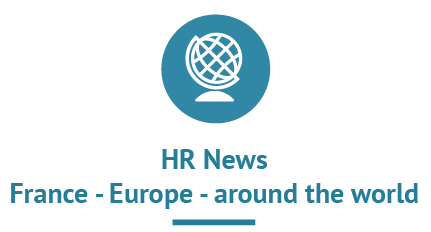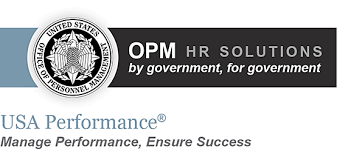|
If you are having trouble viewing this email, open it with your internet browser,
download the PDF version
or contact us.
|
 |
| #33 - March 2021 |
| PDF version - Manage your subscription - Search - Archives |

|
|
vision RH is a newsletter published by the French Directorate General for Administration and the Civil Service (DGAFP). It draws on information sources and reports issued by public administrations, the private sector, international organisations and the press, in several different languages. It aims to provide a broad view of current human resources and civil service initiatives.
|
|

|

|
| Making the most of greater diversity in the civil service | |||||
|
Through its "Talents" initiative, the French administration is putting equal opportunity at the top of its agenda. The goal is to create pathways that will enable a wider range of people to enter public employment. This is a compelling policy that is already well established in a number of countries – which are keen to promote a public sector that is in tune with the societies it serves – but at the same time a difficult undertaking because it is based on sensitive data and it is absolutely essential to avoid any kind of stigmatisation. Encouraging people from a wide range of backgrounds to apply for government jobs, regardless of their origin, is the aim of Germany's wir-sind-bund.de (we are the Republic) website. Available in eleven languages, the site introduces the various public-sector professions and employer services. It provides answers to many practical questions, particularly concerning nationality requirements or the recognition of diplomas earned abroad. Taking this approach a step further, the city-states of Berlin and Hamburg have set hiring quotas. Yet it is clear that diversity often decreases as one moves up the ladder of responsibility. To counter this effect and to achieve better representation at all levels, the UK has launched its Fast Stream programme (direct access to senior management positions). Eligible candidates who meet at least one of three conditions (non-European ethnic origin, disability or low parental income) can then be exempted from the first round of selection. In Canada, as in other countries with similar situations, such as New Zealand, there is an ongoing effort to better integrate communities that are still under-represented. This includes producing and publishing statistical data on a regular basis, ensuring that appropriate criteria are used, and removing systemic barriers that lead to discrimination. The Auckland Government has just recently announced the establishment of an Ethnic Communities Graduate Programme to facilitate access for young minority graduates. Commitment at the highest level, in the form of coordination and monitoring of actions, is clearly the best guarantee of an effective policy. In Belgium, for example, the government "takes measures to reflect the diversity of society in its staff. It also ensures the diverse composition of selection boards and the neutrality of selection procedures." A federal network, consisting of several bodies, supports and shapes the projects included in a three-year strategic plan, ensuring their proper implementation. HR departments have a key role in developing and promoting instruments that contribute to improving diversity. In Finland, the professional sector is involved upstream and provides, inter alia, assistance in drafting skills-based job descriptions as well as multicultural training courses for managers. An annual survey assesses the impact of the actions carried out in the field of labour relations. According to a 2015 survey conducted by the Luxembourg Presidency of the EU, most Member States have a strategy and/or charter (1), sometimes one specific to the public sector. To make best practices better known, but also to analyse them on the basis of common indicators, Austria has developed a variation of the CAF model. Diversity management is one of the performance criteria for managers.
|
|||||
|
|||||
|
|
|||||

|
|||||

|

|

|
| France: a new mobility management tool | |||||
|
Although each French ministry has its own HR information system, the new "interministerial individual status sheet" - which has been integrated into each of these systems and is fully digitised - is designed to optimise the work of administrators, particularly when an employee from another administration is taken on. This contributes to the continuity of the management of personal files during a transfer. |
|||||
|
|||||
|
|
|||||

|
|||||
| Italy: an equal opportunity website for the public sector | |||||
|
Designed to strengthen the propositional, consultative and verification role of the Joint Guarantee Committees (established in 2019), the website collects experiences and best practices to prevent all forms of public-sector discrimination. The standardised information made available online can be compiled and analysed to ascertain the extent to which equal opportunity provisions are being implemented. |
|||||
|
|||||
|
|
|||||

|
|||||
| Portugal: incentivising innovation in human resources | |||||
|
The Portuguese government has set itself three objectives with regard to innovation: enhancing human resources, improving the working environment and developing management models. To encourage as many initiatives as possible in this direction, the government is providing preferential access to training, supporting the development of pilot projects and awarding prizes to those that achieve measurable results. « Our innovation radar organizes practices, in order to make their dissemination understandable and that they become inspiring »
|
|||||
|
|||||
|
|
|||||

|
|||||

|

|
| Germany: hiring civil servant trainees on the basis of a diploma | |||||
|
Faced with a wave of retirements over the next few years, the city-state of Berlin wants to encourage more young graduates to apply, ideally on a long-term basis. To this end, it plans to expand the number of recognised courses of study that allow students to submit applications, but also to amend its local statutes to offer employment on the basis of a diploma with tenure at the end of the legal probationary period. |
|||||
|
|||||
|
|
|||||

|
|||||
| France: a revamped integration scheme for the Hospital Civil Service | |||||
|
The Multi+ website was created to enable hospital staff to explore the various professions and careers in the Hospital Civil Service and to familiarise themselves with the workings of its public institutions. The new version offers updated content, a more playful approach to knowledge, genuine interactivity and exchanges between colleagues, while providing support from local facilitators. |
|||||
|
|||||
|
|
|||||

|
|||||
| Sweden: a barometer of key skills in the public sector | |||||
|
The barometer is the result of a biannual survey of public employers and is now available in an interactive format in two versions (detailed and simplified). It provides an overview of the public sector's changing needs and skills requirements. It highlights areas of shortage where it can be difficult to fill vacancies or even to retain existing staff. « The barometer makes it possible to regularly analyze the evolution of the situation thanks to a modeling built on the employment cycle »
|
|||||
|
|||||
|
|
|||||

|
|||||

|

|
| France: IdealCO – a collaborative platform for the public sphere | |||||
|
A management community has been created on the website of the provider of collaborative solutions for public authorities. It is intended for all those who are interested in management, whether directly or indirectly, with the aim of providing tools and encouraging discussion. Monthly online conferences, a digital wall for exchanging resources or sharing experiences and serious games are among the activities offered. |
|||||
|
|||||
|
|
|||||

|
|||||
| UK: "Innovation Fellows" to help with strategic projects | |||||
|
The British Government is launching a programme to attract the best talent in strategic areas of the Civil Service. Modelled on a similar initiative in the US, it will select a number of high-potential individuals each year to provide expertise and coordination in five major departmental transformation projects (Foreign Affairs, Defence, Education, Justice and Health). |
|||||
|
|||||
|
|
|||||

|
|||||
| Switzerland: a framework contract for the cloud hosting of HR data | |||||
|
Validated by the Federal Council in December 2020, the use of cloud solutions will be implemented in government departments. The provider of the HR information system (SAP) will gradually transfer the data it currently hosts. Rather than a state-owned solution (as in Slovenia), the country has opted for a hybrid model that combines public operators and private providers. All of them will have to comply with the requirements of the Swiss Cloud accreditation label. « It will also be contractualized that personal data requiring special protection must remain on the national territory »
|
|||||
|
|||||
|
|
|||||

|
|||||

|

|
| Europe: prospective study on leadership and the gender gap | |||||
|
At the request of the European Parliament, EIPA has carried out a study on the gender gap in public employment and leadership in the EU. It reviews the state of play in the Member States' national administrations and reflects on the factors that hinder women's recruitment and career development. It focuses on HR practices that contribute to professional equality and that problematise certain social policies. |
|||||
|
|||||
|
|
|||||

|
|||||
| Spain: negotiations to sharply reduce fixed-term employment | |||||
|
Under pressure from the EU, the Spanish government is negotiating a reduction in fixed-term employment. While the target (8%) has been reached in central government departments, the same cannot be said of the autonomous communities and regions, which have a rate of up to 40% of fixed-term employment in the areas of education and health. The Ministry has proposed amending the law to keep its use to a minimum. |
|||||
|
|||||
|
|
|||||

|
|||||
| Australia: a support programme following long-term illness | |||||
|
"Gov2Gov Recovery at Work" is the name of the programme run by the State of Queensland (Sydney) to support staff returning after a long period of absence due to illness. Developed with a group of rehabilitation experts, it aims to identify all the jobs that can be offered and that are suitable for a return-to-work period. Departments that undertake this process are supported. « By promoting a return to work in the best conditions for the employee, we improve his ability to readjust »
|
|||||
|
|||||
|
|
|||||

|
|||||

|

|
| Artificial Intelligence and Big Data, how Saint-Gobain is "augmenting" the HR function | |||||
|
Algorithms are gradually finding their way into human resources. Whether for the purposes of recruitment or career development, decisions are being made based on analysing and cross-referencing data from an ever-increasing number of sources. Saint-Gobain, a major economic operator in the building materials sector, has invested heavily in algorithms (1) with an eye to, in an initial phase, check the relevance of its hiring processes. Teams of HR managers, IT specialists and legal experts were set up. Using an iterative process, they worked to improve the quality of the data. The team built several models, which were applied to the company's strategy for finding and keeping talent. Simulations have shown that almost 90% of the employees identified correspond to more than 70% of the profile sought for a position. The company also has a good track record when it comes to identifying potential departures. Buoyed by these encouraging results, the company is planning on harnessing the power of AI to combat discrimination bias. Responding to legitimate concerns, Saint-Gobain's HR Department has made it clear that it does not want to become more selective. Decisions are not delegated to algorithms, and only HR staff has access to candidates' names, via a conversion table.
|
|||||
|
|||||
|
|
|||||

|
|||||

|

|
| Succession planning is a top priority in managing the US federal workforce | |||||
|
According to the latest demographic study of federal employees, 29% of US civil servants are over 55, an 11% increase in 20 years, and 18% of them are eligible to retire. According to a survey in early 2018, 61% of senior managers said that no succession planning had been done prior to their departure and 56% that they had not been involved. This alarming state of affairs led the Office of Personnel Management to take steps to organise the necessary knowledge transfer in an efficient and methodical manner. The "Workforce & Succession Planning" project was set up to help departments and agencies avoid a skills gap when replacing their staff. .
A dedicated team provides a range of services that are fully integrated into the overall HR development and recruitment strategy. The process starts with a risk assessment, which is the prerequisite for customised planning. The consultants can thus anticipate the difficulties associated with the planned departure of both managers and key employees at all levels of the organisation. To develop and prioritise "succession profiles", the team uses a number of tools, including the 9 Box Grid (1), which helps to identify talent by analysing both potential and performance. Numerous points are reviewed during interviews with current staff (existence of documentation on the functions performed, identification of prerequisites and/or training to be followed), as well as with HR departments (level of preparedness of the structure including on budgetary aspects, as well as opportunities and methods for handing off to a successor in order to ensure continuity). At the end of the process, a detailed report is submitted. Based on "depth charts" and "quick reference sheets", it provides recommendations concerning both the appraisal and positioning of in-house staff, and also the informed choice of external recruitment, if necessary. Drawing on the experience it has gained in the course of the assignments it has carried out, OPM has published a guide to procedures and support aimed at making departments more autonomous in their succession planning.
|
|||||
|
|||||
|
|
|||||

|
|||||

|
|
Share
|
||||
|
||||
| SUBSCRIBE - UPDATE YOUR SUBSCRIPTION - ARCHIVES - RSS - UNSUBSCRIBE |
|
French Directorate-General for Administration and the Civil Service (DGAFP)
Publication Manager: Nathalie COLIN Managing Editor: Nathalie GREEN Editor-in-chief and Autor: Jean-François ADRIAN Layout and graphic design: Jean-François ADRIAN and Aphania. The texts of the publication do not reflect the point of view of the DGAFP
In accordance to the French Act n°78-17 of 6 January 1978 on information technology, data files and civil liberties and to the european General Data Protection Regulation (GDPR), your personal data is stored securely and you are entitled to access, correct and delete them. To do so, you should send an e-mail to (contact-visionrh@kiosque.bercy.gouv.fr) or write to DGAFP: 139, rue de Bercy - 75012 Paris; France.
Reproduction is authorized with mention of the source © DGAFP 2021 / N° ISSN: 2606-7528. |
|
|






